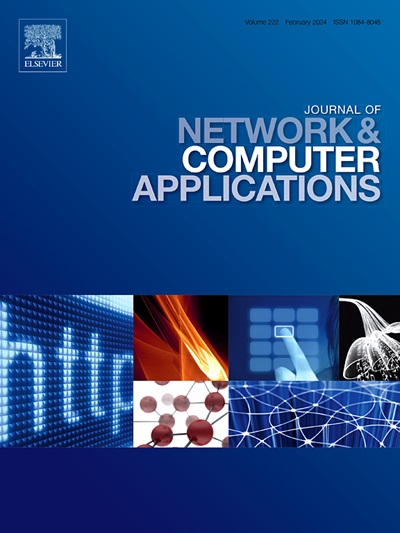物联网僵尸网络:基于人工智能的检测技术综述
IF 7.7
2区 计算机科学
Q1 COMPUTER SCIENCE, HARDWARE & ARCHITECTURE
引用次数: 0
摘要
当涉及到跨行业的数字化时,物联网(IoT)是一个游戏规则改变者。第四次工业革命(4IR)确实带来了范式转变,在节省成本和提高生产率和利润方面,释放了可能性,并将行业带入了前所未有的高度,这只是其中的几个例子。虽然物联网提供了更多的好处,但物联网和关键使能技术的复杂性、局限性和要求带来了挑战。分布式拒绝服务(DDoS)攻击是近年来屡屡成为头条新闻的最普遍和最主要的网络攻击之一。物联网技术日益成为提供这些网络攻击的首选技术。物联网设备对对手来说是一个有吸引力的目标,这并不奇怪,因为由于固有的限制,并且考虑到它们被大量部署,它们很容易受到攻击。本文综述了近年来提出的物联网僵尸网络检测方法。此外,还概述了物联网生态系统的组成部分,揭示了它们的挑战、限制和对保护整个生态系统至关重要的关键要求。其中包括云计算、机器学习(ML)和新兴的无线技术:5G和6G。本文章由计算机程序翻译,如有差异,请以英文原文为准。
Internet of Things botnets: A survey on Artificial Intelligence based detection techniques
The Internet of Things (IoT) is a game changer when it comes to digitisation across industries. The Fourth Industrial Revolution (4IR), brought about a paradigm shift indeed, unlocking possibilities and taking industries to greater heights never reached before in terms of cost saving and improved performance leading to increased productivity and profits, just to mention a few. While there are more benefits provided by IoT, there are challenges arising from the complexities, limitations and requirements of IoT and key enabling technologies. Distributed Denial of Service (DDoS) attacks are among the most prevalent and dominant cyber-attacks that have been making headlines repeatedly in recent years. IoT technology has increasingly become the preferred technology for delivering these cyber-attacks. It does not come as a surprise that IoT devices are an attractive target for adversaries, as they are easy to compromise due to inherent limitations and given that they are deployed in large numbers. This paper reviews IoT botnet detection approaches proposed in recent years. Furthermore, IoT ecosystem components are outlined, revealing their challenges, limitations and key requirements that are vital to securing the whole ecosystem. These include cloud computing, Machine Learning (ML) and emerging wireless technologies: 5G and 6G.
求助全文
通过发布文献求助,成功后即可免费获取论文全文。
去求助
来源期刊

Journal of Network and Computer Applications
工程技术-计算机:跨学科应用
CiteScore
21.50
自引率
3.40%
发文量
142
审稿时长
37 days
期刊介绍:
The Journal of Network and Computer Applications welcomes research contributions, surveys, and notes in all areas relating to computer networks and applications thereof. Sample topics include new design techniques, interesting or novel applications, components or standards; computer networks with tools such as WWW; emerging standards for internet protocols; Wireless networks; Mobile Computing; emerging computing models such as cloud computing, grid computing; applications of networked systems for remote collaboration and telemedicine, etc. The journal is abstracted and indexed in Scopus, Engineering Index, Web of Science, Science Citation Index Expanded and INSPEC.
 求助内容:
求助内容: 应助结果提醒方式:
应助结果提醒方式:


